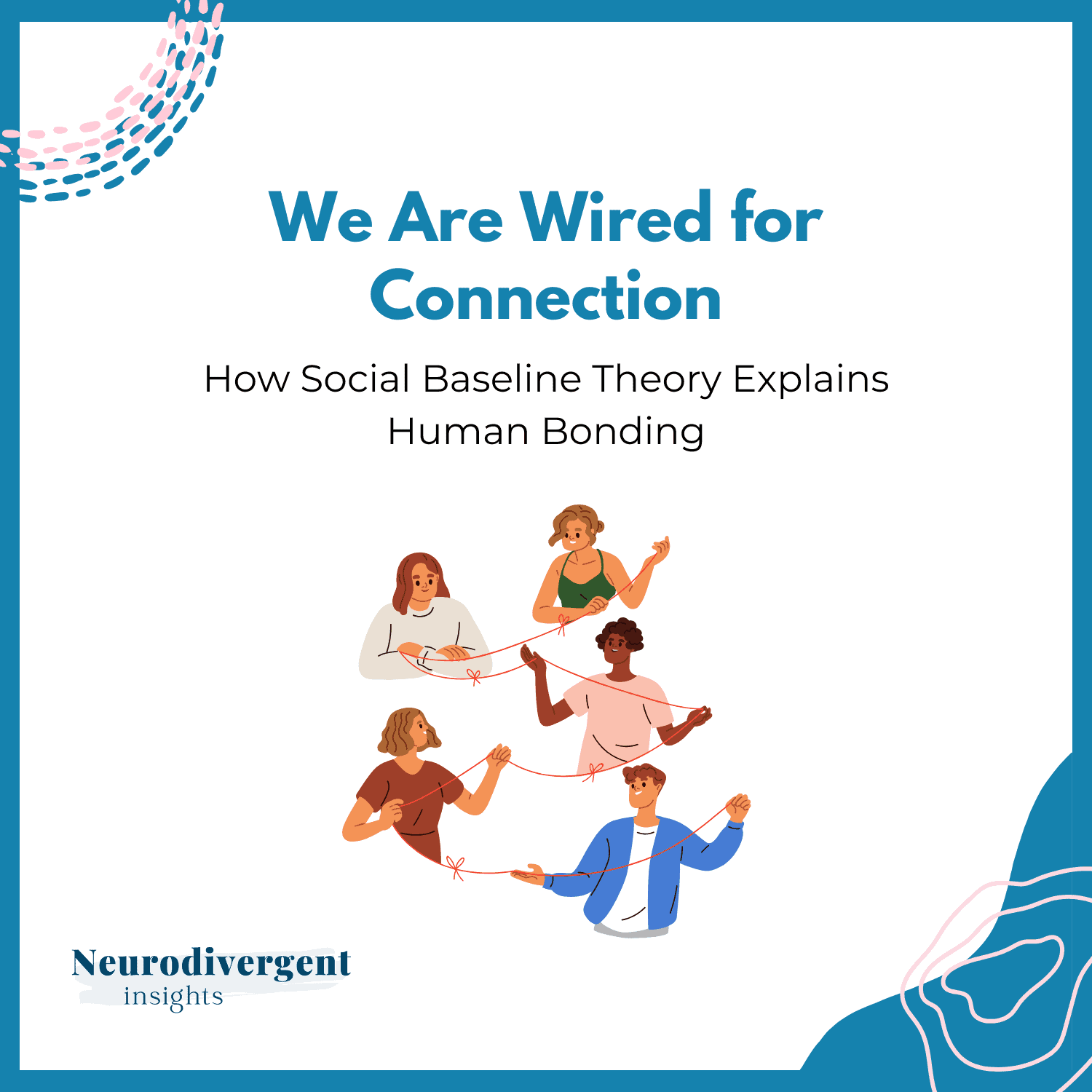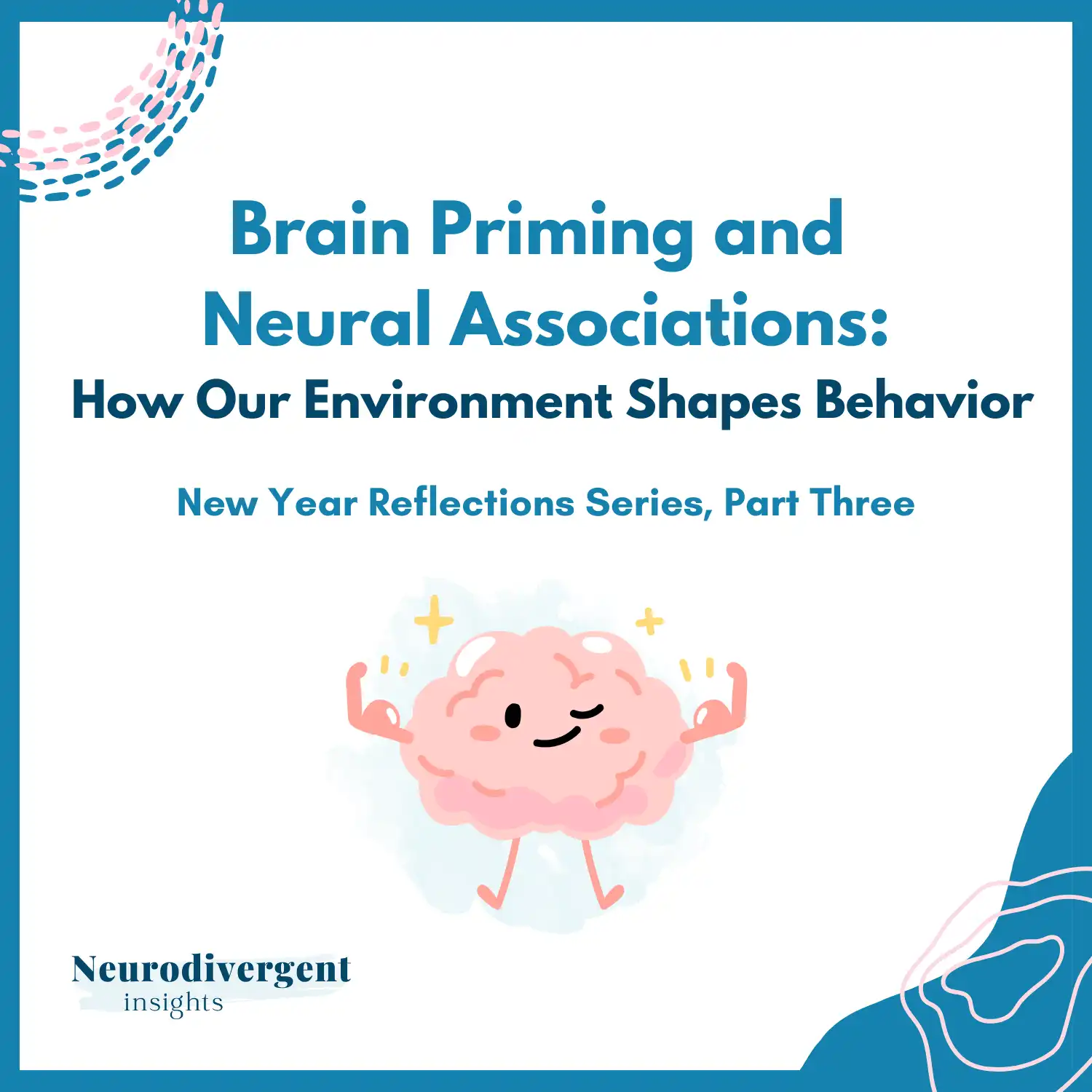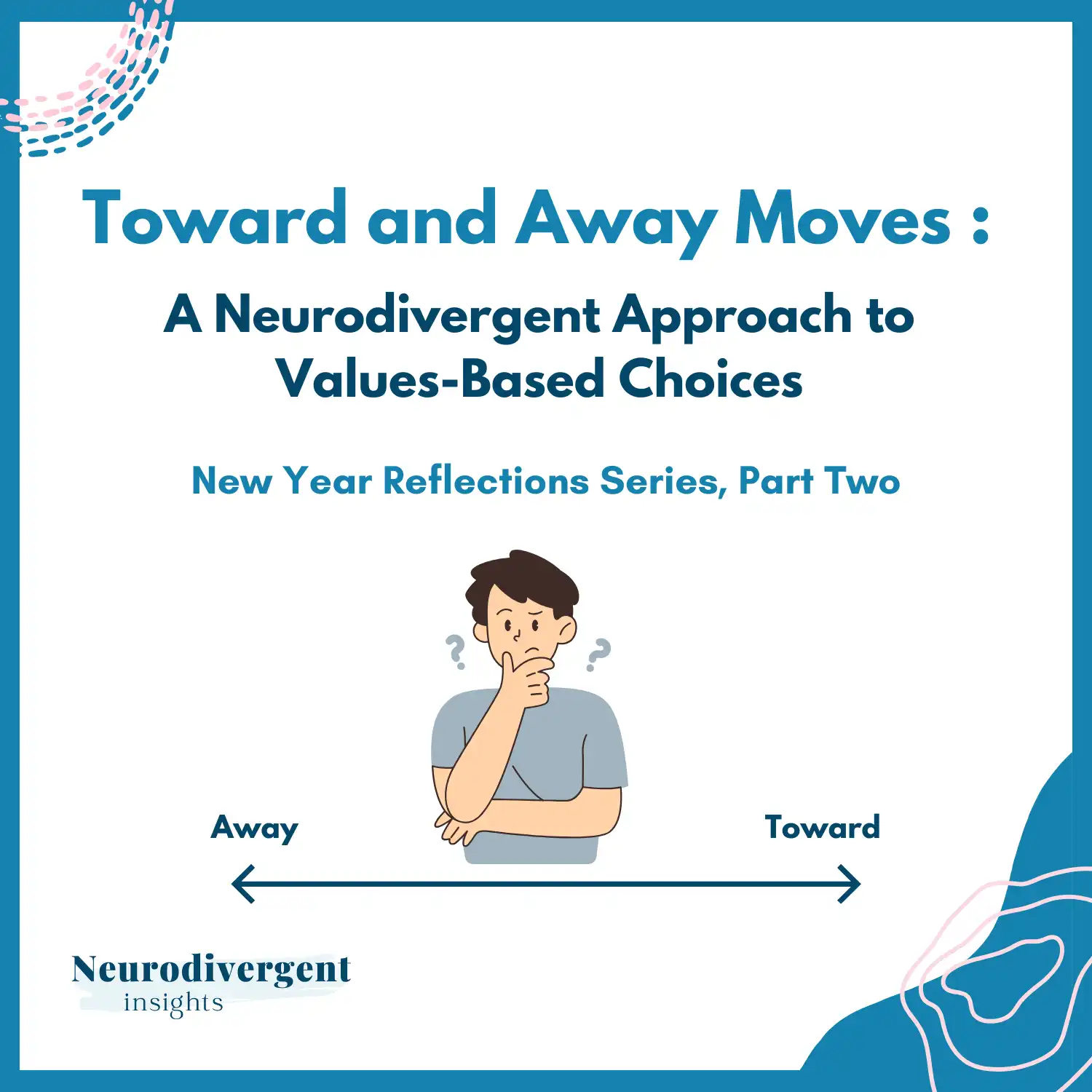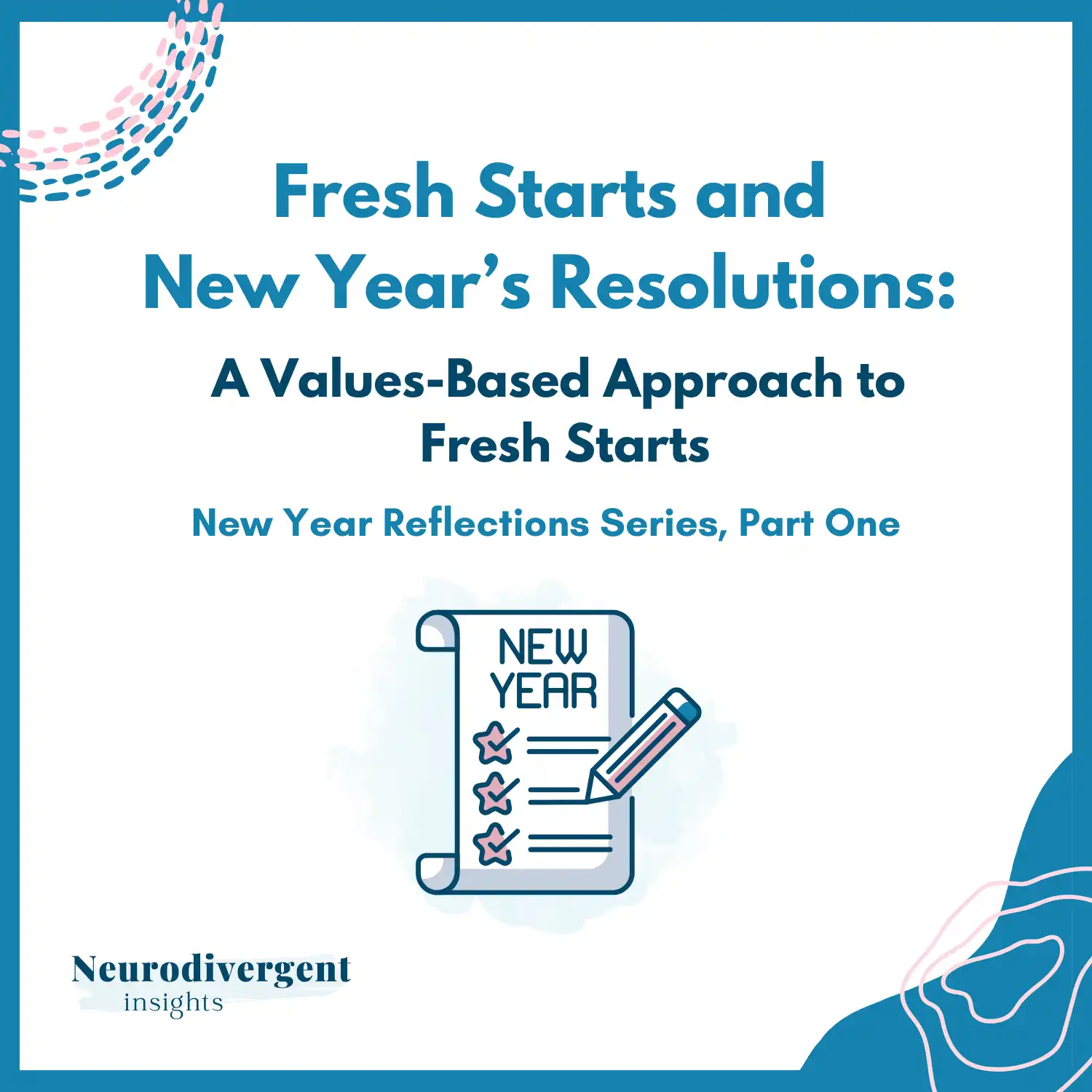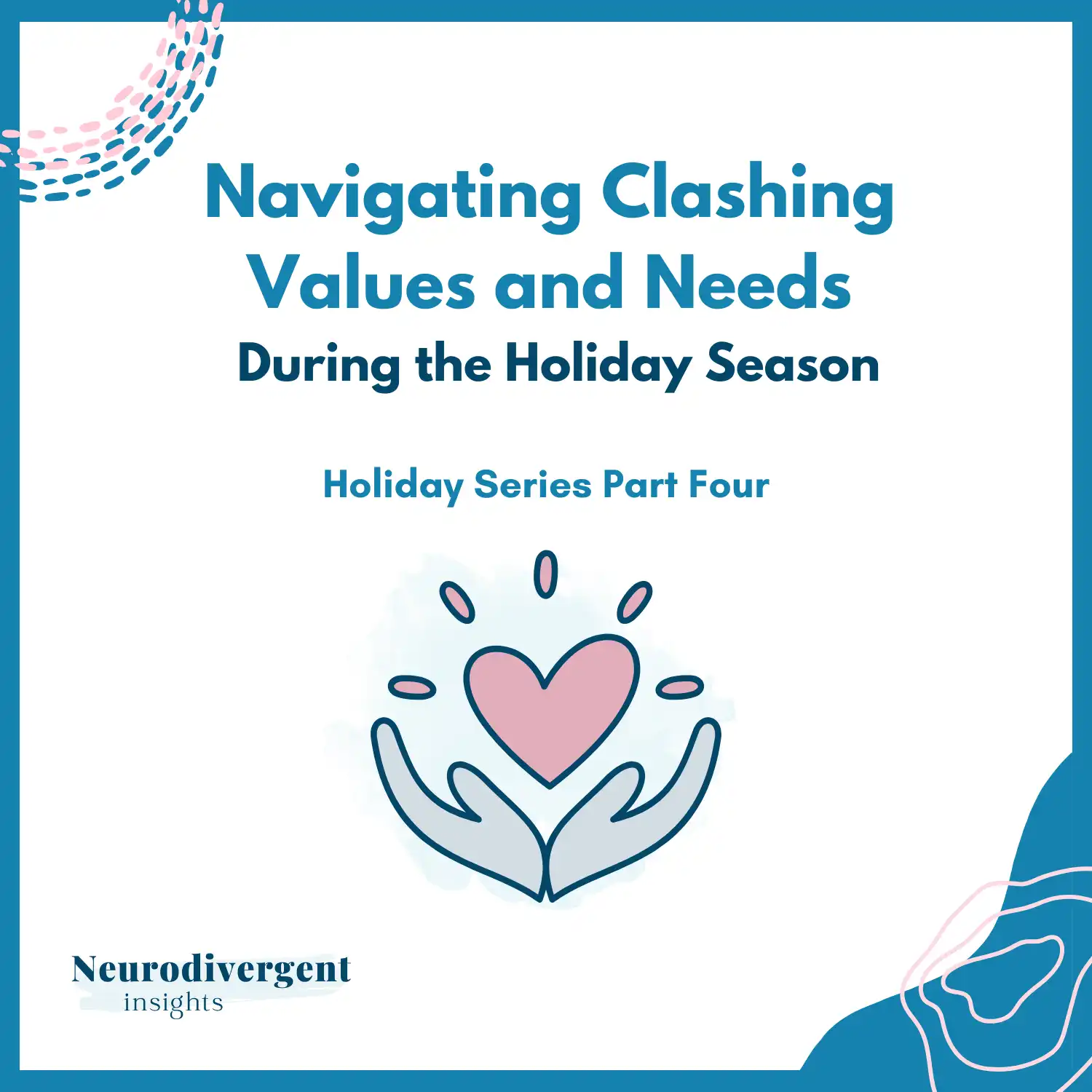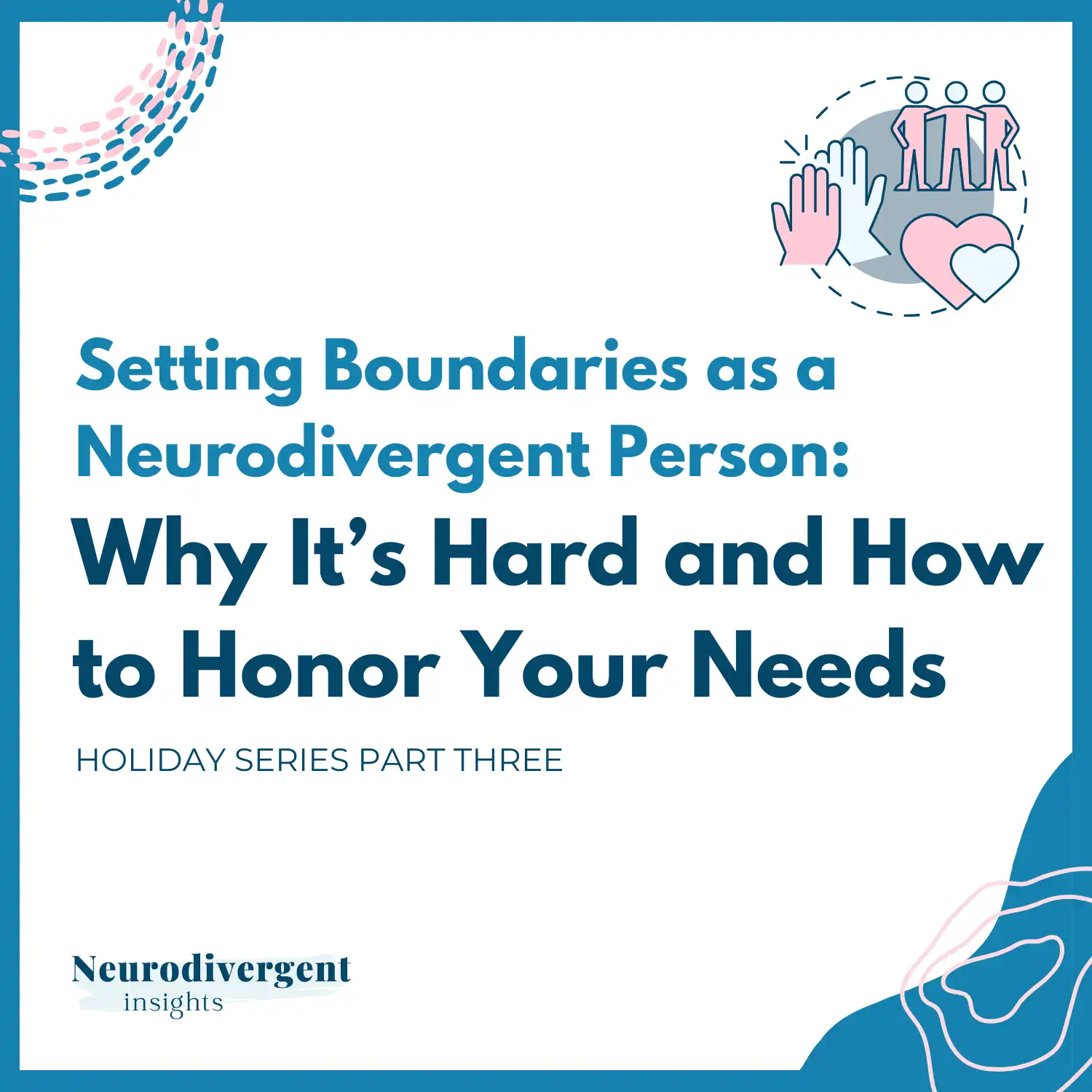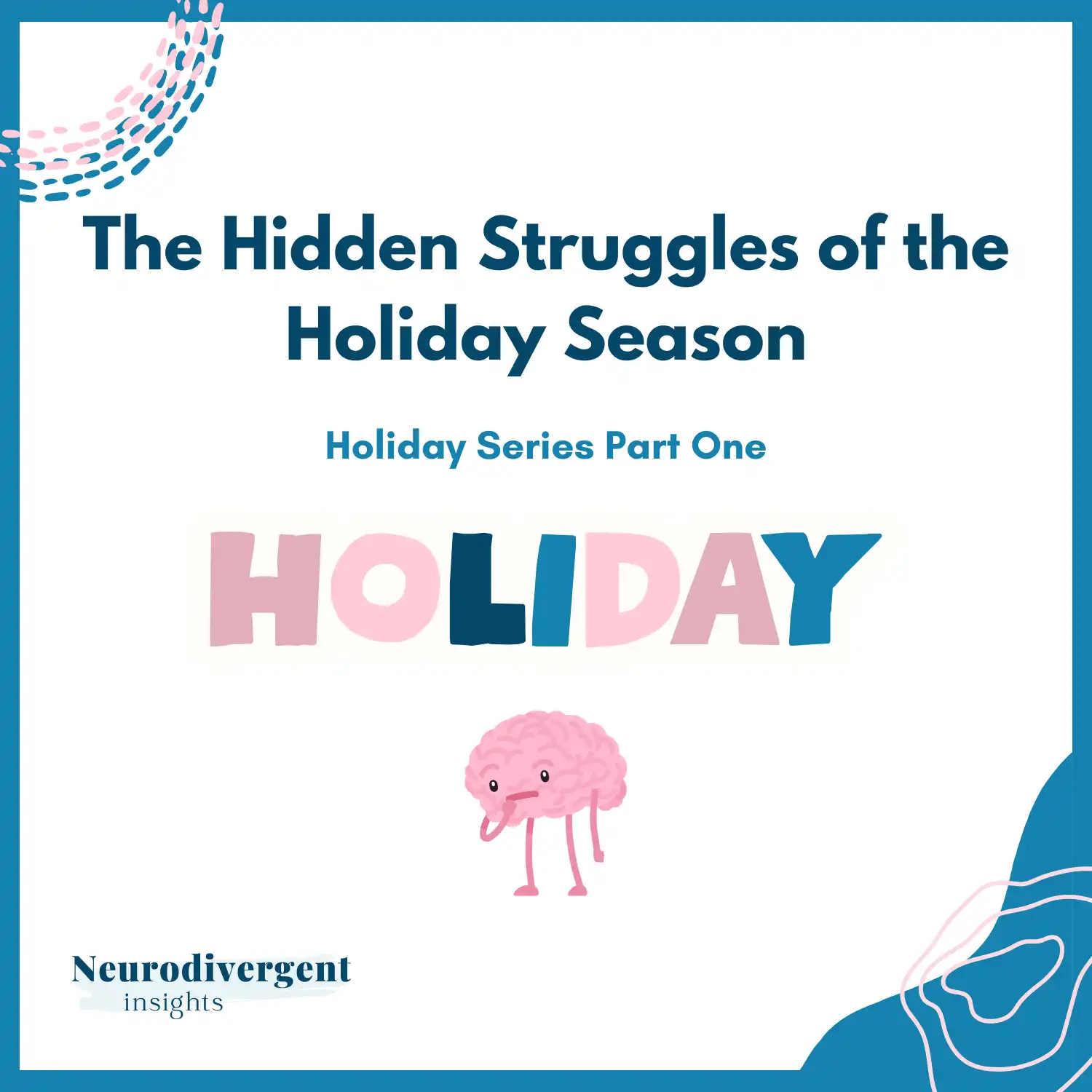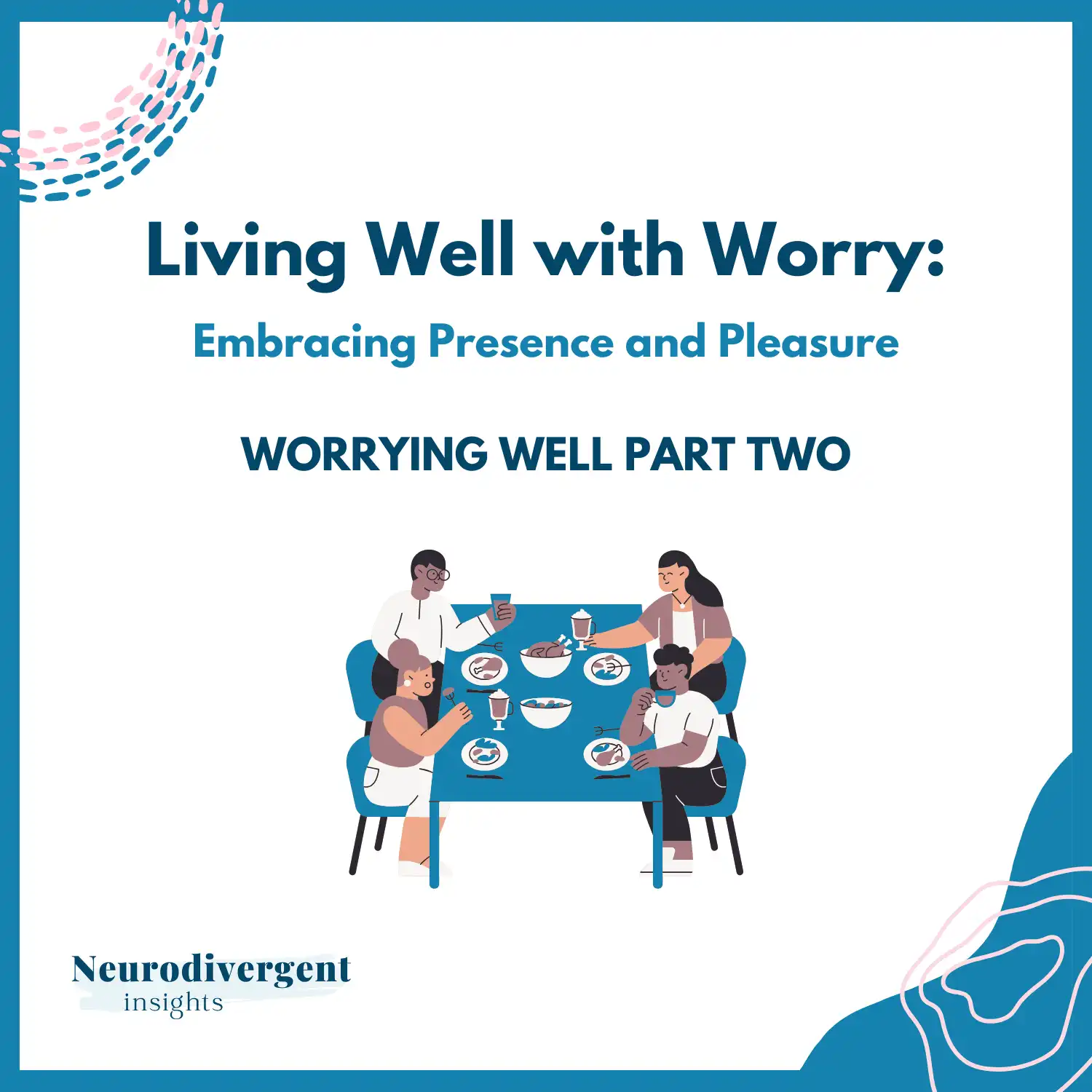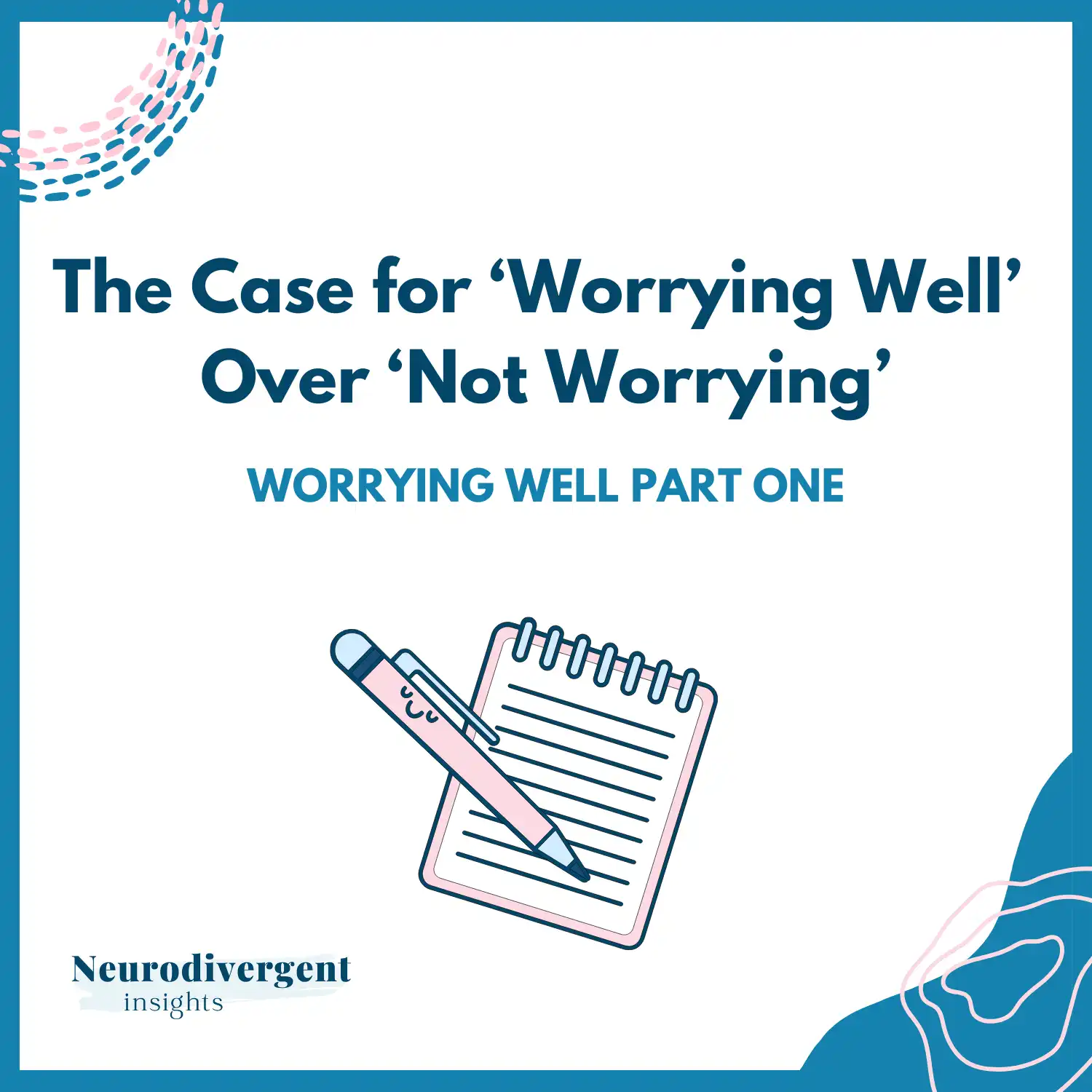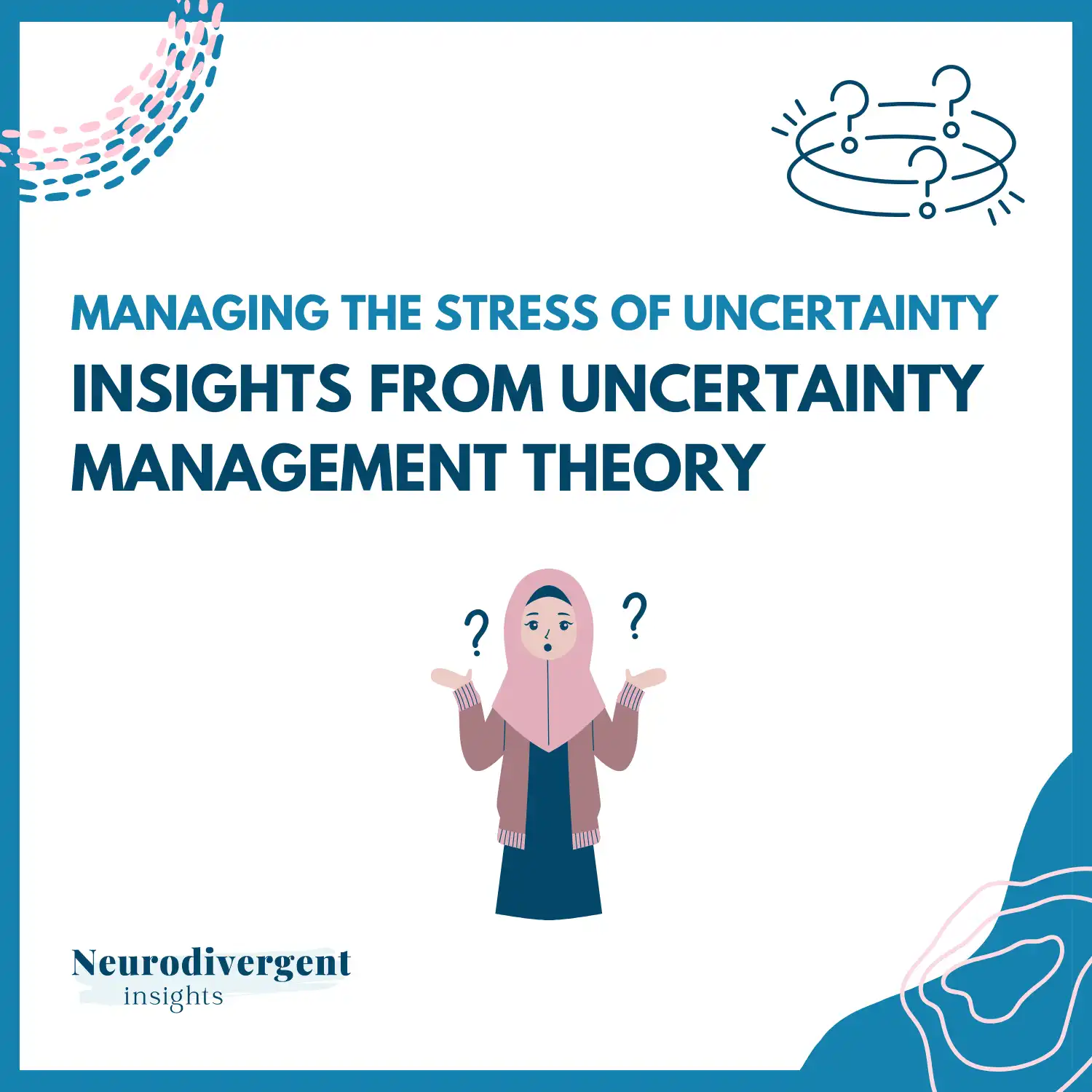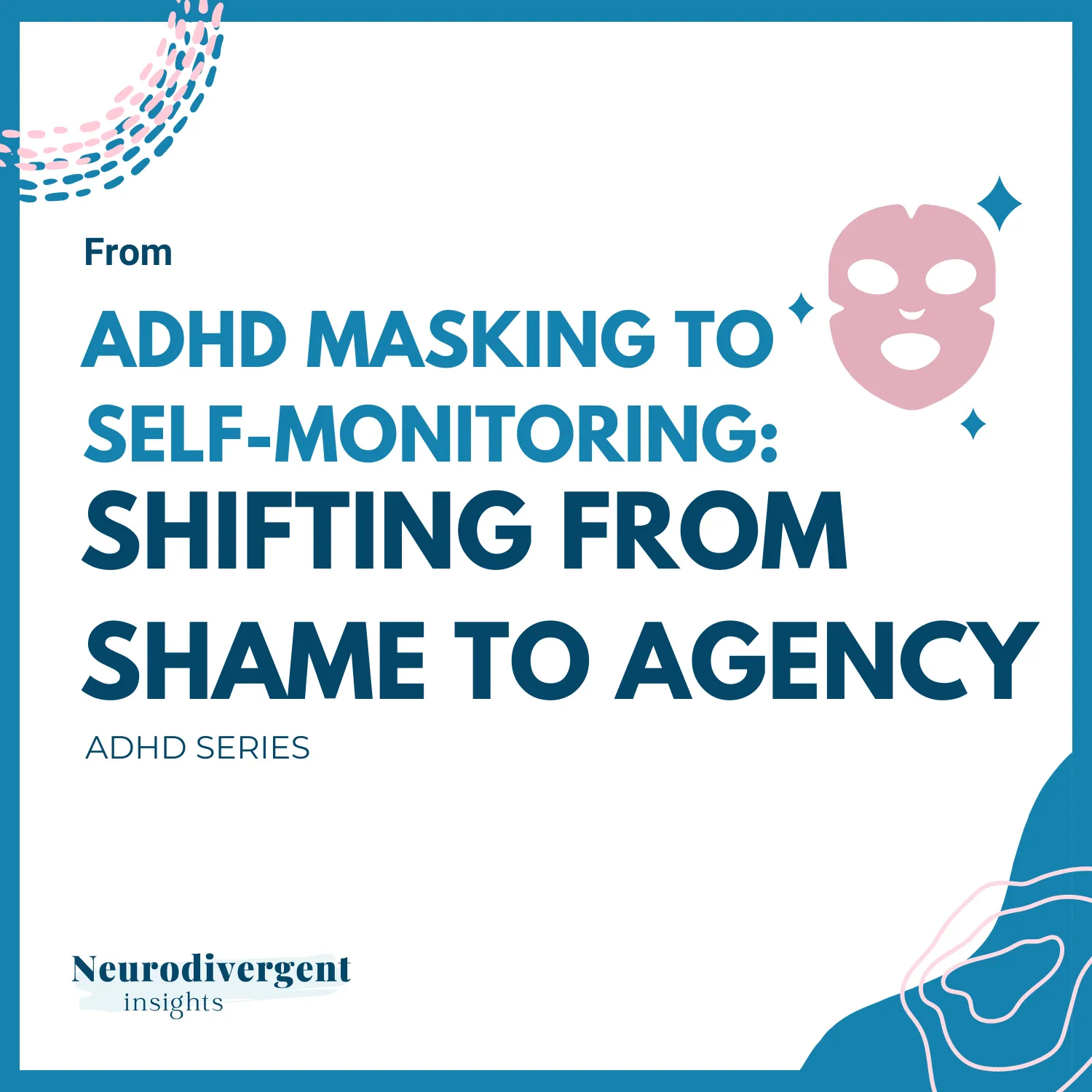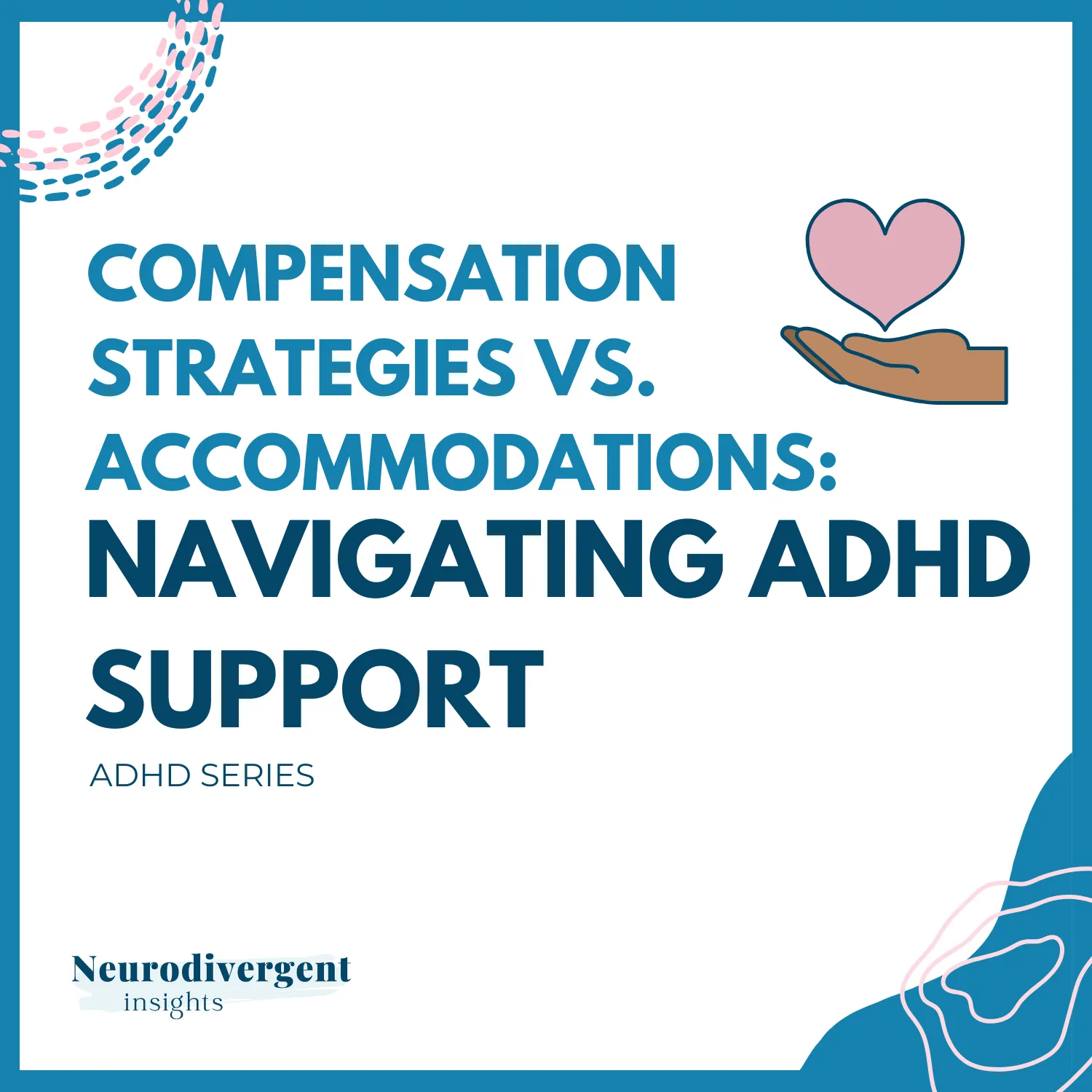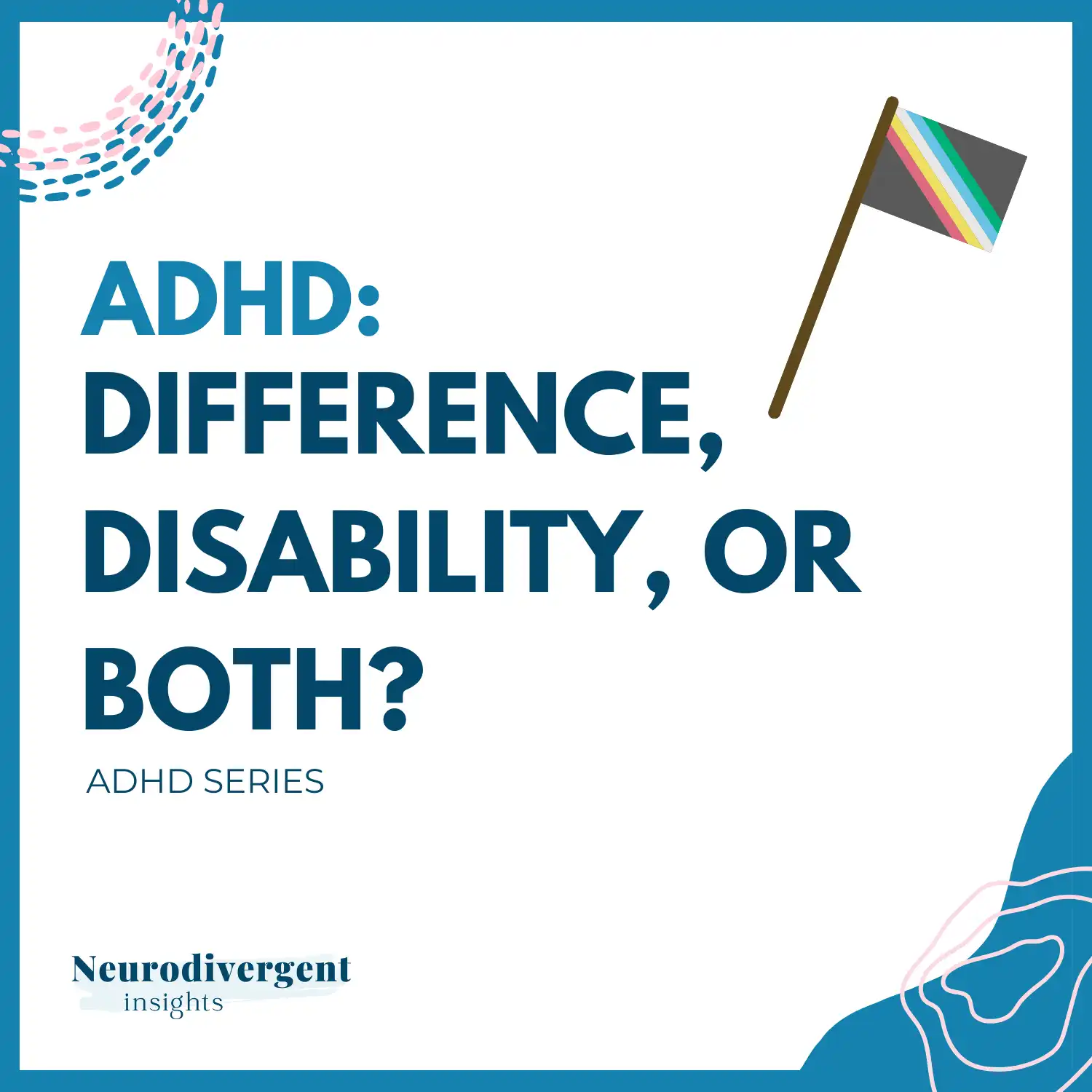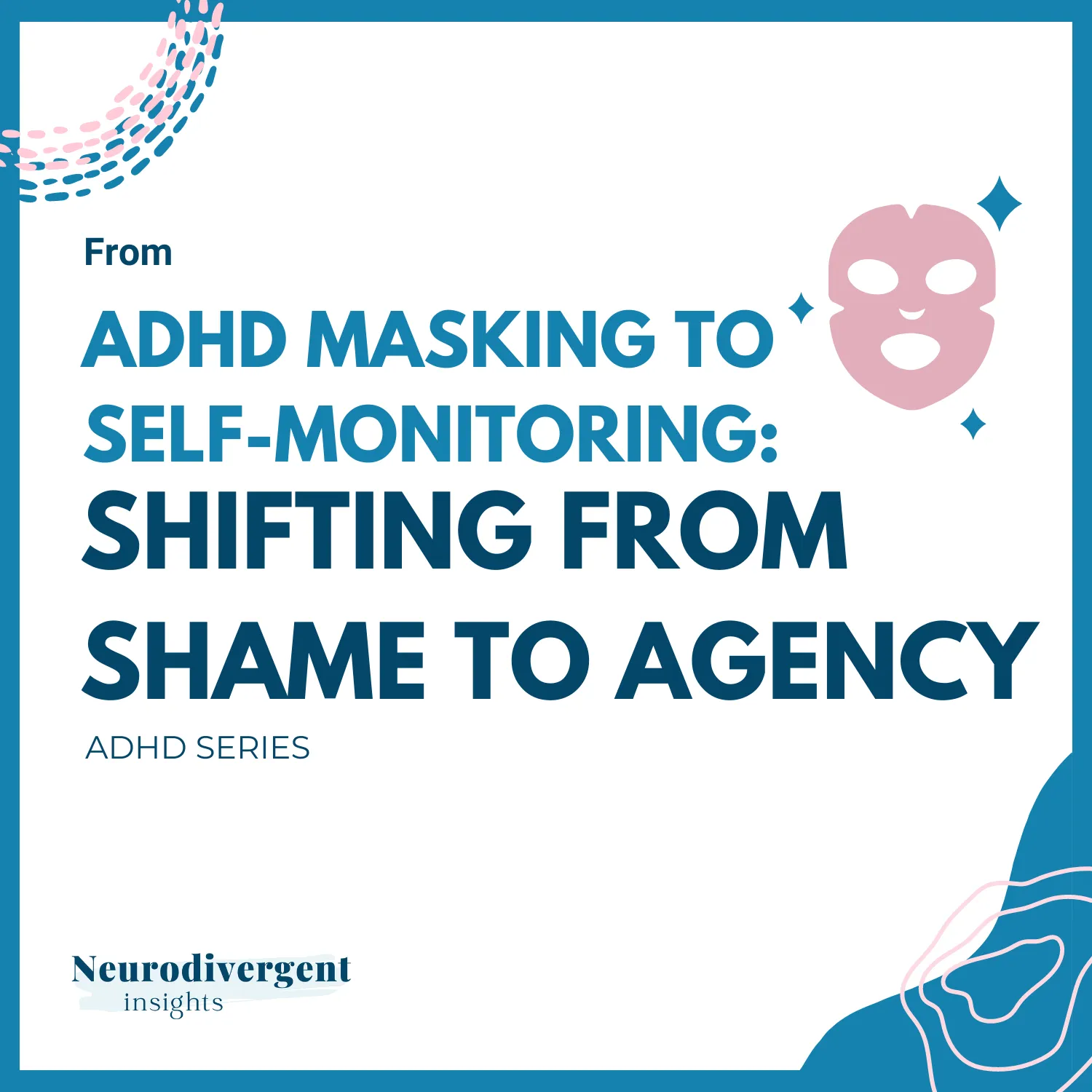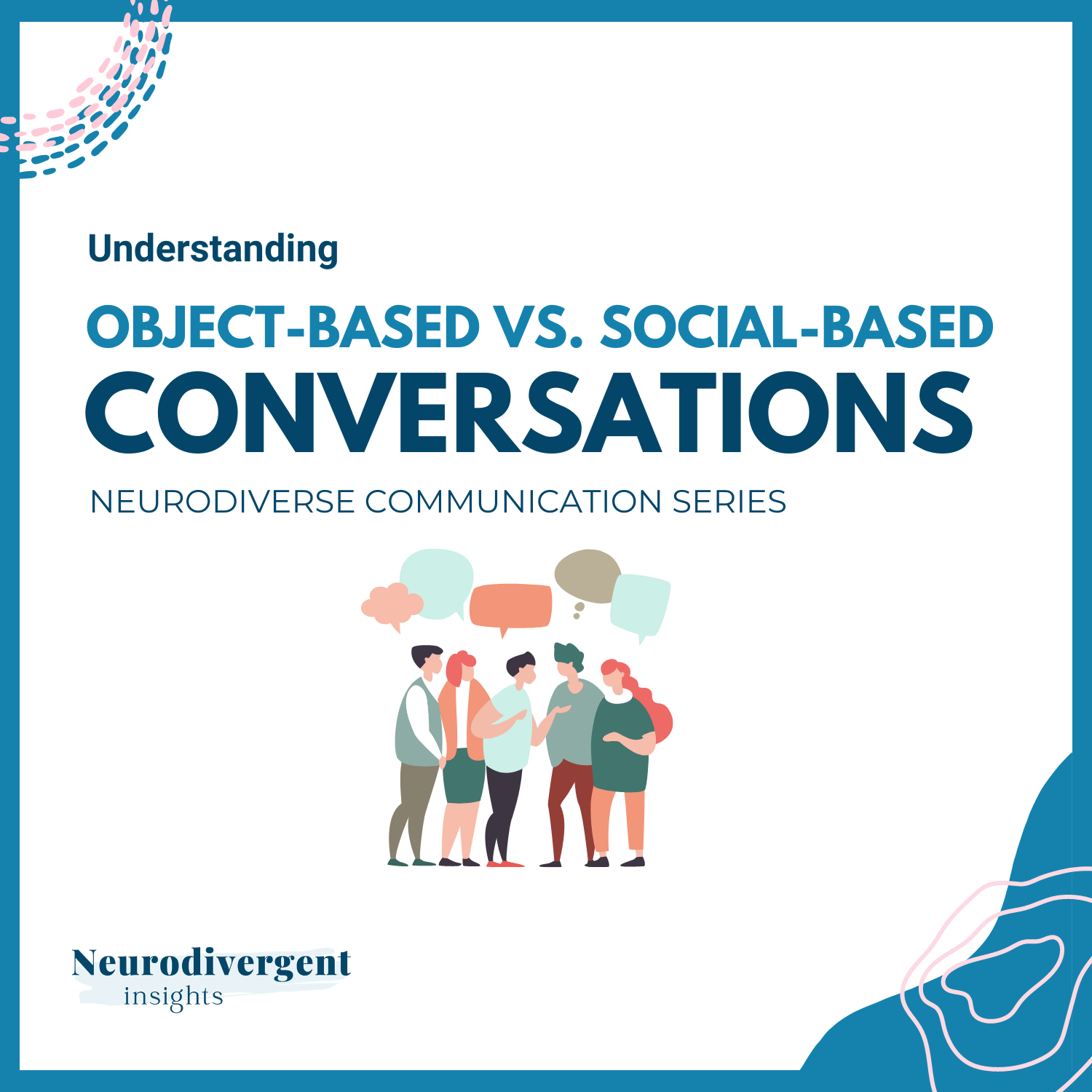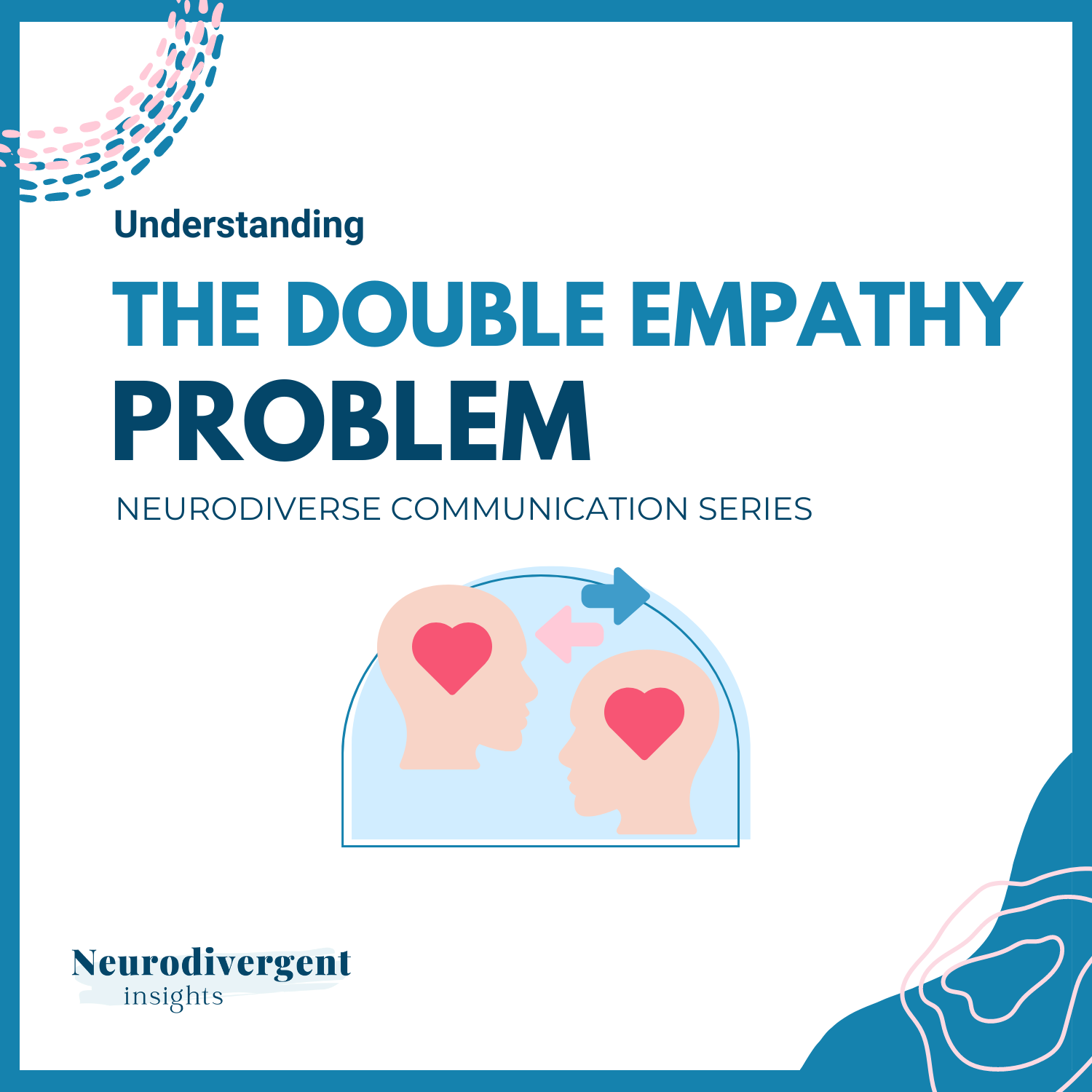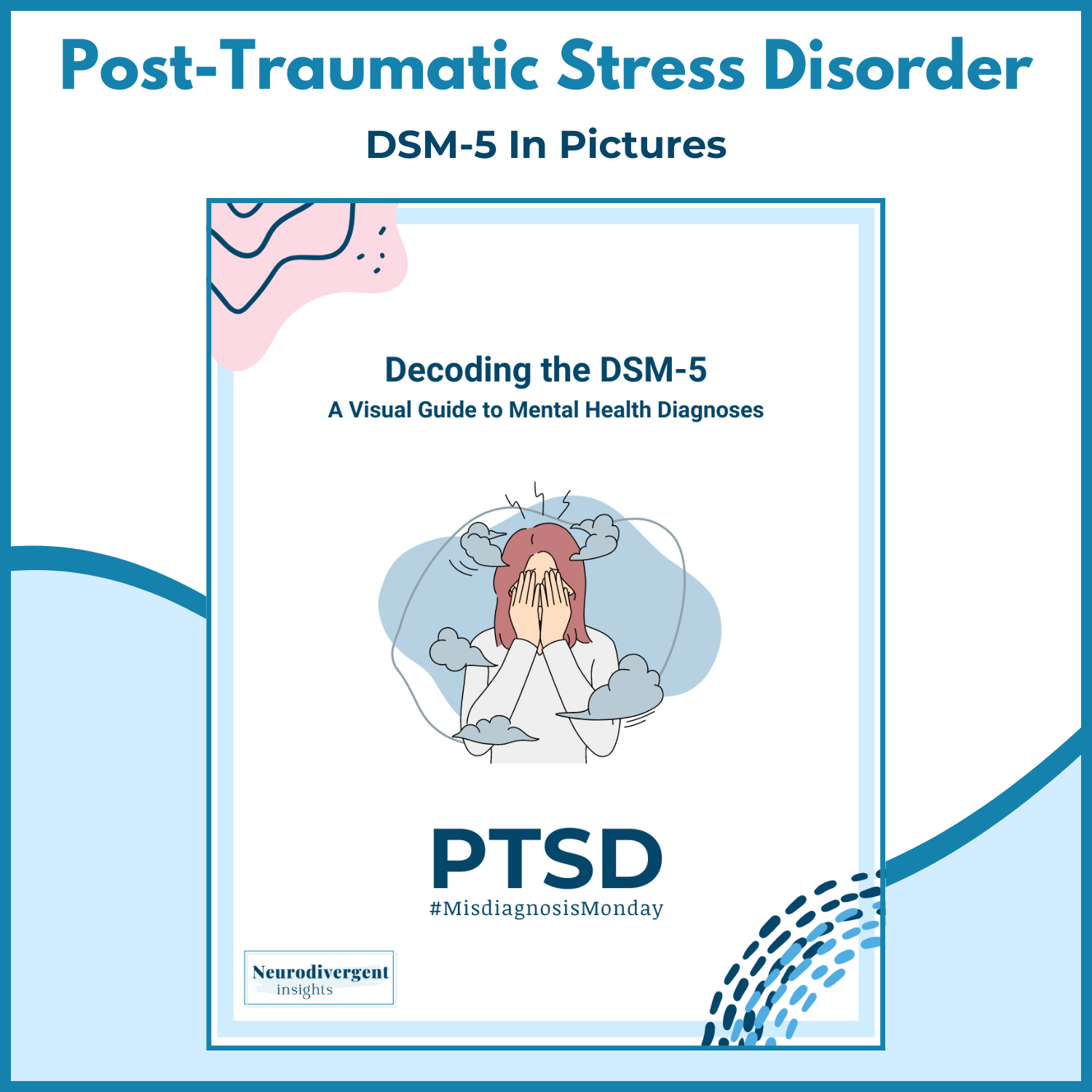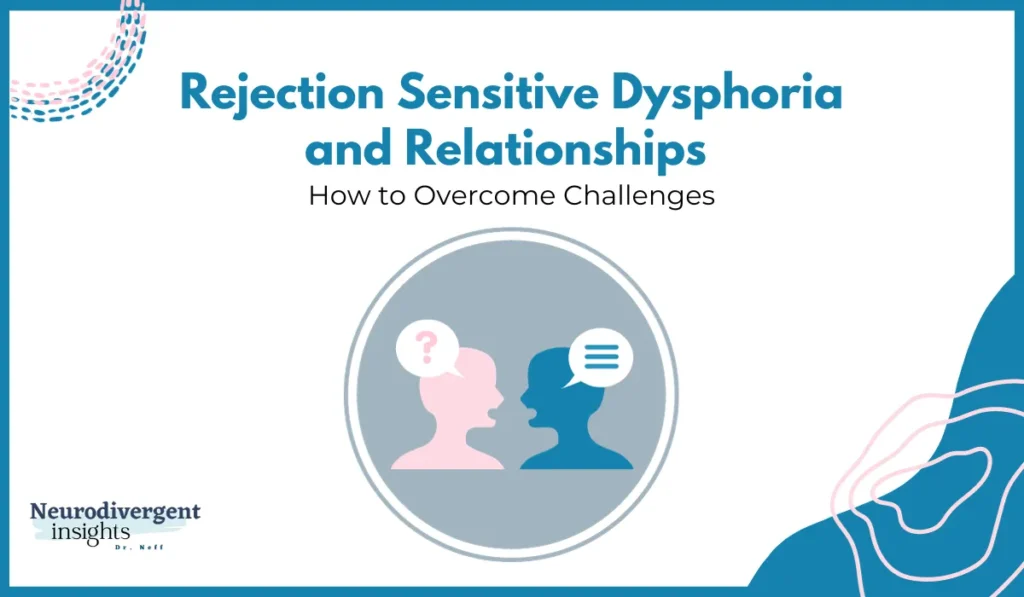
Navigating Rejection Sensitive Dysphoria (RSD) in relationships is like steering through turbulent waters. It tends to make us perceive slights, even when none were intended, which can strain our ability to maintain healthy connections. I can vividly recall times when RSD made it challenging for me to tackle tough conversations in my romantic relationships. Instead of facing them directly, I would often withdraw. This experience is, indeed, quite common! Alternatively, RSD can lead us to react with anger or become overwhelmed by emotions, making it tough to address difficult topics. In this article, we will dive into how RSD can affect ADHD relationships and partnerships.
First, we’ll review some basics of what RSD even is and then dive more specifically into how it can impact relationships. In this article, we will cover:
An overview of Rejection Sensitive Dysphoria (RSD), including key characteristics
Unique Challenges of RSD in Relationships
Strategies for Managing RSD in Relationships
Resources for Building Stronger Relationships
What is Rejection Sensitive Dysphoria?
Rejection Sensitivity Dysphoria, often referred to as RSD, is an Intense emotional reaction to rejection or the perception of it. This experience is notably common among people with ADHD, and many express not just emotional distress but also physical discomfort when they encounter rejection. The impacts of RSD can significantly affect our self-esteem and our relationships.
Perceived Rejection
When it comes to Rejection Sensitive Dysphoria (RSD), our brains take on an almost hyper-vigilant role, ever alert for anything that might remotely resemble rejection. It’s as if we’re equipped with a finely tuned rejection radar, tirelessly scanning our surroundings for any signs of it. The thing is, when our minds are in this state of perpetual vigilance, they tend to discover rejection, even where it may not truly exist. So, with RSD, it’s like donning a pair of ultra-sensitive “rejection glasses,” painting our world with this lens of perceived rejection.
To grasp this aspect of RSD, it’s crucial to realize that we’re not just reacting to actual rejection but also to any perceived hint of it. These hints can be as subtle as a missed smile, a brief greeting, or even the absence of positive feedback, each capable of setting off RSD’s intense emotional reactions.
Consider it like wearing tinted glasses – but in this case, they’re “RSD glasses” that tint our perception with the color of perceived rejection. Dr. Dodson captured it perfectly: “What you’re looking for, you tend to find.” With these RSD glasses on, our minds become finely attuned to signs of rejection, causing us to interpret even the faintest signals of exclusion, even if they aren’t genuinely there. We’re constantly on high alert, scanning for any hints of rejection, which, unfortunately, magnify the emotions associated with RSD.
Imagine this scenario: You ask your partner about their day, and they respond with a short, neutral answer. With RSD, it’s easy to interpret this as rejection – perhaps thinking they’re upset, annoyed, or distancing themselves from you. In reality, they might just be tired or they had a long day without the energy to elaborate. When you have RSD, the default assumption is often, “It’s me, I’m the problem, it’s me.”
Our minds, by their very nature, are wired to pick up even the faintest hints of rejection, which perpetually fuels our quest for these cues in our surroundings. Regrettably, this constant vigilance can reinforce our belief that rejection is an ever-present force in our lives.
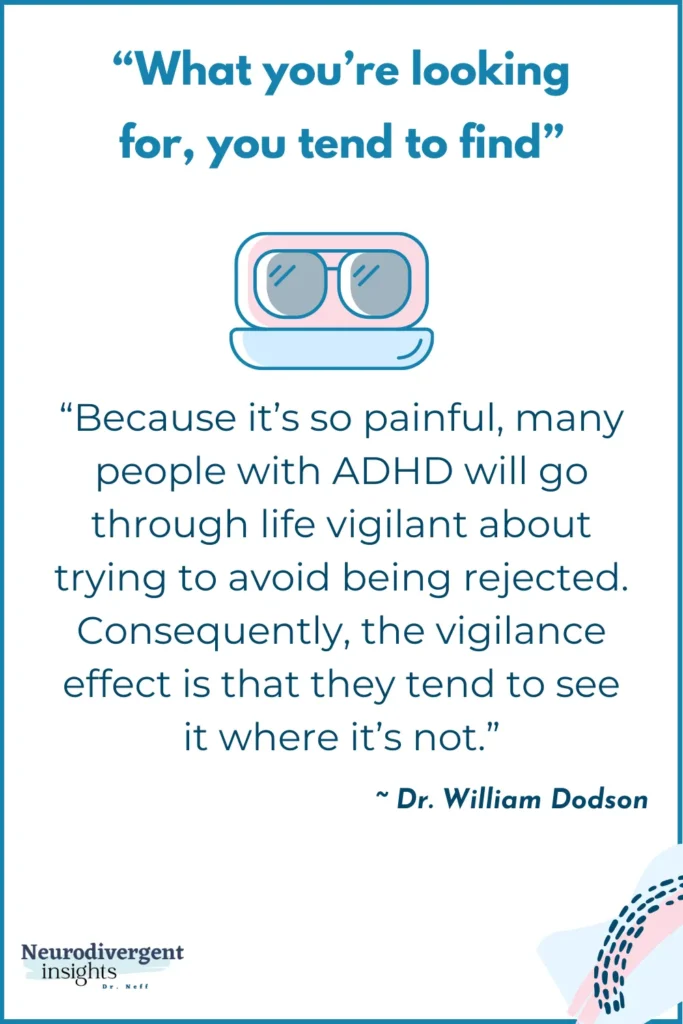
Characteristics of Rejection Sensitivity Dysphoria
Rejection Sensitivity Dysphoria (RSD) is characterized by a set of core features that uniquely shape its impact:
Heightened Emotions: RSD amplifies emotions, resulting in reactions that may appear disproportionate.
Swift Emotional Shifts: Those affected by RSD frequently experience rapid mood swings triggered by perceived rejection.
Physical Manifestations: Emotional distress associated with RSD can manifest as physical discomfort, adding a tangible layer to the experience.
Self-Image Struggles: RSD often leads to diminished self-esteem, as people contend with recurrent feelings of inadequacy.
Analyzing Social Cues: People with RSD meticulously scrutinize social cues, at times misinterpreting innocent gestures as indicators of rejection.
Emotional Turbulence: RSD can generate emotional storms, characterized by large bouts of sadness, anger, or frustration.
Social Avoidance: Many people living with RSD tend to avoid social interactions due to a fear of potential rejection or criticism.
Relational Impact: In the relationships, RSD can make it hard to initiate new relationships, address conflict or navigate disagreements.
Severe Emotional Pain Response to Rejection
The hallmark of Rejection Sensitive Dysphoria (RSD) is the profound emotional anguish it inflicts when confronted with rejection. This heightened sensitivity magnifies the emotional wounds we experience, causing them to cut much deeper than usual. Even the mere perception of rejection can trigger an overwhelming and distressing emotional response.
As aptly articulated by Dr. Dodson, a renowned psychiatrist and ADHD researcher:
“Criticism or rejection is something no one welcomes, but for individuals with ADHD, it can at times be shattering. It’s as if it knocks them off their feet, leaving them to describe it as a sensation akin to being physically struck or stabbed in the chest.”
Dr. Dodson’s words poignantly illustrate the profound impact of RSD on those who grapple with it.
Physical Pain Response to Rejection
Many people find it hard to put into words the physical discomfort they experience when confronted with rejection or even the mere perception of it. Some describe it as akin to a punch in the stomach or other intense bodily reactions.
Science reveals that social rejection can activate specific brain regions responsible for processing both physical and emotional pain. Moreover, the degree of physical discomfort is directly proportional to the perceived intensity of rejection. In simpler terms, the more profound the feeling of being rejected, the more pronounced the physical unease.
One study even made a remarkable discovery – reflecting on a recent romantic breakup triggered both emotional and physical pain responses in the brain (Kross et al., 2011). In essence, when individuals express that rejection is painful, it’s not just a turn of phrase – it’s a genuine, palpable experience that transcends mere verbal expression.
Avoidance of Social Situations
Navigating social situations takes on a unique dimension for people grappling with RSD. The fear of rejection becomes a powerful motivator to shy away from social gatherings, as the mere thought of potential rejection can stir up strong emotions.
Imagine someone with RSD receiving an invitation to a social event. While others might see it as a regular get-together, for someone with RSD, it can trigger a whirlwind of anxiety, fear, and anticipation. The dread of encountering rejection or criticism often leads people to decline such invitations.
This avoidance strategy serves as a way to cope. Those with RSD aim to shield themselves from the emotional turmoil linked to rejection by steering clear of situations where it might occur. Unfortunately, this pattern of avoidance can become a self-perpetuating cycle, limiting their social interactions and experiences while also fostering feelings of isolation.
Avoidance of Circumstances Where Criticism is Possible
For those managing RSD, the fear of encountering criticism often results in a tendency to steer clear of situations where criticism might arise. This inclination is rooted in the intense emotional reaction that the mere possibility of criticism can trigger.
Let’s envision a scenario: Someone with RSD receives an invitation for a date. While others may perceive it as an exciting prospect, for an individual with RSD, it can unleash a whirlwind of anxiety, fear, and anticipation. This apprehension, rooted in the fear of encountering rejection or criticism, might even dissuade them from engaging in dating altogether or from taking the initiative to ask others out on dates.
This avoidance strategy serves as a coping mechanism. Those with RSD use it as a shield against the emotional turmoil linked to rejection by steering clear of situations where it might rear its head. Regrettably, this pattern of avoidance can transform into a self-perpetuating cycle, constraining their social interactions and experiences while also cultivating feelings of isolation.
Unique Challenges of Rejection Sensitive Dysphoria in Relationships
Navigating relationships presents challenges for everyone, but for individuals grappling with Rejection Sensitive Dysphoria (RSD), the journey becomes notably more complex! RSD, connected to conditions like ADHD, heightens emotional sensitivity to perceived rejection or criticism, introducing a range of distinctive challenges within the realm of human connections. In this section, we delve into the unique hurdles faced by those with RSD in the context of relationships, offering practical navigation techniques to cultivate healthier and more fulfilling connections.
When addressing Rejection Sensitive Dysphoria (RSD) within relationships, it’s imperative to understand the distinct obstacles it brings. Some studies even suggest that individuals with ADHD, who often contend with RSD, face divorce rates about twice as high as those without ADHD.
So, why does this occur? It’s a complex interplay of factors, including shifts in relationship dynamics, imbalances in household responsibilities, amplified emotional fluctuations, heightened stress levels, potential medication side effects, variations in relationship dynamics leading to one partner adopting a parental role, and differences in sexual desire. To clarify, it’s important to recognize that in relationships impacted by ADHD, multiple factors are at play beyond RSD, but RSD certainly adds an extra layer of complexity to the mix.
Those most profoundly affected by ADHD and RSD in relationships are often those who either lack awareness of ADHD or deny its existence. That’s one of the reasons it’s so important to get clear about how ADHD and RSD are impacting our relationships! Once we gain consciousness of ADHD and comprehend RSD’s influence, we gain greater control over how it impacts our relationships. Here, we explore some ways in which RSD can manifest in relationships.
Misinterpretation of Intent
A significant challenge stemming from RSD is the inclination to misinterpret the intentions of others. Innocent remarks or actions from partners can, when viewed through the lens of heightened sensitivity, transform into perceived rejection or criticism, often leading to unnecessary conflicts. When RSD takes over like this, I refer to these experiences as “RSD narratives” because, during such moments, our minds tend to craft painful stories that often deviate significantly from reality.
🧭 Navigation Technique: In these situations, clear and direct communication emerges as an invaluable tool. By asking clarifying questions when uncertainty arises and seeking confirmation regarding the accuracy of their interpretations, individuals grappling with RSD can effectively deconstruct misunderstandings born from their heightened emotional perception. This process, which I like to call “relational reality testing,” involves evaluating your interpretation of an event in relation to the other person involved. When trust is established in the relationship, this practice becomes a powerful antidote to RSD, helping to correct the distorted RSD narratives that often play in our minds.
Fear of Rejection
A deep-seated fear of rejection often takes root in the hearts of those with RSD, casting a long shadow over their ability to initiate or maintain relationships. This fear can manifest in different ways, either leading to avoidance behaviors in starting relationships or affecting the dynamics within existing ones, sometimes resulting in heightened defensiveness that hinders effective communication.
🧭 Navigation Technique: It’s helpful to recognize that the fear of rejection is a common human experience and doesn’t define one’s worth or ability to forge meaningful connections. Instead, it’s a shared emotion that, when acknowledged and addressed, can be channeled in more proactive ways. Identifying any avoidance patterns that may have entangled you and actively addressing them can help you break free from the cycle of fear and avoidance.
Avoidance Behaviors
In a bid to shield themselves from perceived rejection, individuals grappling with RSD often resort to avoidance behaviors, such as evading confrontations or steering clear of emotional vulnerability. This can manifest in different ways, from prematurely ending relationships, hesitating to enter them in the first place, or avoiding challenging conversations within existing relationships.
🧭 Navigation Technique: A powerful framework for addressing avoidance behaviors (related to conflict) is the practice of Nonviolent Communication Theory. This framework equips individuals with a structured approach to engage in difficult conversations, offering a solid foundation from which to initiate discussions. Additionally, gradual exposure, particularly with trusted individuals, can help gradually build up one’s tolerance for effective conflict resolution and difficult conversations. Furthermore, it’s crucial to work through anxiety and avoidance patterns related to other behaviors to create a more holistic approach to managing RSD.
Emotional Intensity
RSD possesses the remarkable capacity to magnify emotional responses to such an extent that even minor disagreements or misunderstandings can escalate into overwhelming emotional turmoil. When we find ourselves in a state of stress within our bodies, triggering the fight-flight-freeze-fawn response, we often lose our ability for effective communication.
Navigational Strategy: Engaging in mindfulness and self-regulation techniques can prove invaluable in such situations. The STOP acronym is a particularly helpful tool for couples facing these challenges. The STOPP technique encompasses the following:
S – STOP! – Imagine this as your mental break button. The moment you notice your mind or body reacting to a trigger or stress, just take a pause. Say “STOP!” to yourself, but you don’t have to shout it out; it’s like your inner reminder to slow things down.
T – TAKE A BREATH – Now, shift your focus to your breathing. It’s a simple but powerful way to regain some calm. Inhale gently through your nose and then let it out slowly through your mouth. Feel the rhythm of your breath.
O – OBSERVE – This step is about tuning in to what’s going on inside you. Pay attention to your thoughts, any physical sensations, and even those sudden urges you might feel.
P – PULL BACK – Picture this as zooming out to see the bigger picture. Avoid getting too caught up in your thoughts. Sometimes, our minds can make things seem worse than they are. Try to consider other angles, like you’re giving yourself a little perspective boost.
P – PRACTICE WHAT WORKS – Finally, it’s time to decide what to do next. Think about what’s the best move here. What’s helpful for you, for the people around you, or for the situation? Stay true to your values, and choose actions that make sense. It’s all about being effective and appropriate in the moment.
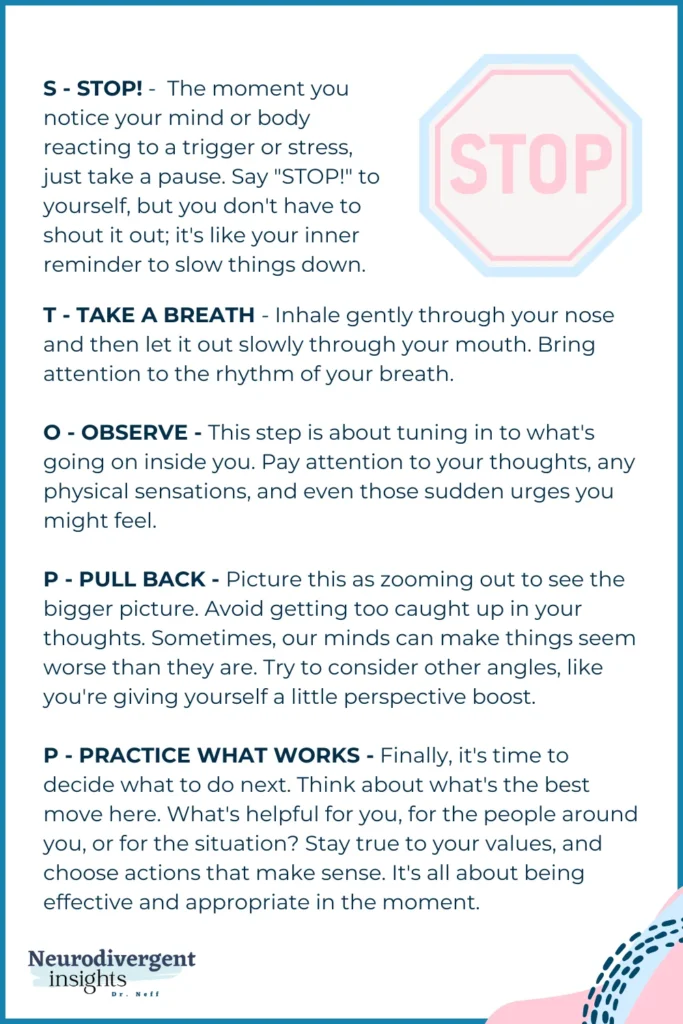
When confronted with minor conflicts, pausing to employ the STOP technique allows individuals with RSD to regain emotional equilibrium before responding, thereby fostering more productive communication and healthier relationships.
Trust Difficulties
For those contending with RSD, the task of nurturing trust can indeed seem like a formidable undertaking, as the ever-present specter of betrayal and emotional turmoil casts a persistent shadow over our lives. Additionally, our struggle with trust can strain our relationships, as it may lead our partners to feel constantly under scrutiny, fearing the loss of our trust.
🧭 Navigational Technique: The recommended strategy for navigating trust issues involves the gradual cultivation of trust within secure and supportive relationships. Recognizing that trust is a process that develops over time and commencing with small, measured steps can lay the groundwork for constructing more robust and resilient connections.
Communication Struggles
Expressing emotions and needs can often be an uphill battle for individuals grappling with RSD, resulting in frequent misunderstandings and unmet emotional needs in their relationships. Moreover, due to the challenges mentioned earlier, we may tend to avoid challenging conversations, allowing issues to accumulate over time.
🧭 Navigation Technique: The key to surmounting these obstacles lies in fostering open and honest dialogue. Start by crafting clear and concise statements about your feelings and needs. It’s worth considering various communication formats, as many neurodivergent individuals find written communication easier than verbal exchanges. While face-to-face verbal conversations are ideal for important discussions, it can be beneficial to work towards this gradually. You can initiate communication through letters, voice memos, or notes, among other methods (if you’re prone to fight-flight energy, texting is best avoided, as it can lead to reactive responses and a lack of in-person context). Choose communication strategies that introduce a pause between receiving and responding, such as letter writing or email.
In face-to-face conversations, practicing active listening and employing check-backs to clarify what you’ve heard can further bridge communication gaps, facilitating more effective and empathetic exchanges.
Impact on Self-Esteem
Repetitive experiences of rejection or criticism can gradually chip away at one’s self-esteem and self-worth, leaving a lasting imprint on their sense of identity within a relationship. This can lead to a person being more susceptible to settling for unhealthy relationship dynamics, becoming vulnerable to exploitation, seeking partners who validate their identity, or adopting a perpetual people-pleasing role within the relationship, often subsuming their own identity to align with their partner’s.
🧭 Navigation Technique: To effectively navigate this challenge, it is crucial to recognize the toll that eroded self-esteem can take and engage in profound self-exploration to address its root causes. Engaging in deep work involves treating oneself with the same kindness and understanding that one would extend to a close friend. Over time, replacing self-criticism with self-compassion during moments of error or challenge can fortify your sense of self and preserve emotional well-being.
Furthermore, gaining insights into how self-esteem influences your attraction to others and the dynamics that manifest in your relationships is essential for fostering new and healthier relational patterns.
Overcompensation
In an attempt to avoid rejection, individuals with RSD may find themselves overcompensating by adopting people-pleasing behaviors. This can lead to emotional exhaustion, a loss of authenticity within relationships, and the development of unhelpful relational patterns that persist over time.
🧭 Navigation Technique: To address these overcompensation patterns and the underlying fears driving them, it’s essential to engage in psychological work that enables a person to genuinely internalize their inherent worth. This involves delving into the roots of these behaviors, exploring self-perception, and working on self-acceptance. By embarking on this psychological journey, individuals can cultivate new, healthier patterns and reduce the need for overcompensation. Additionally, establishing clear boundaries rooted in self-care remains crucial for preserving emotional well-being.
Insecurity
Persistent feelings of insecurity can disrupt the balance of power and trust within relationships, making it challenging to establish and maintain healthy dynamics. These feelings can also give rise to reassurance-seeking behaviors, which not only exacerbate anxiety but can also strain the relationship with a partner.
🧭 Navigation Technique: To effectively navigate this challenge, individuals can deepen their connection with their partners by engaging in open and honest conversations about their insecurities. This dialogue fosters mutual understanding and empathy. By sharing these feelings and seeking support, both partners can collaborate to create an environment of trust and emotional safety, strengthening the foundations of a healthy relationship. It’s important to be mindful, however, not to fall into reassurance-seeking or confirming loops that may perpetuate the cycle of insecurity.
Anger and Projection
Another common response to RSD is the manifestation of projection and anger. RSD can trigger such intense emotional experiences that our psychological defense mechanisms, including projection, come into play. When we project, we unconsciously attribute the feelings we cannot tolerate experiencing onto others. In the context of RSD, this can unfold as follows: when we feel rejected, we may behave in ways that inadvertently make our partners feel rejected. For example, using the previous scenario from the blog post, if you ask your partner about their day and receive a brief response, you may interpret it as rejection and subsequently withdraw, providing minimal responses in return. This inadvertently leads to your partner experiencing the same feelings of rejection, illustrating the concept of projection.
Additionally, in response to rejection, a person may react with anger and lash out at their partner. Once again, this serves as a form of projection, as the partner ends up feeling what the person with RSD finds so intolerable.
🧭 Navigation Technique: Recognizing projection and addressing underlying psychological defenses often requires in-depth psychological work. Many individuals find it beneficial to work with a therapist to identify these patterns and develop strategies for tolerating difficult emotions (defenses tend to lower when it feels safe to do so). Additionally, pinpointing recurring patterns within the relationship can help break the cycle of projection. The EFT (Emotionally Focused Therapy) infinity loop can be a useful tool for identifying and addressing these patterns in a relationship.
Impact on Partner
RSD doesn’t exist in a vacuum; it can significantly impact not only the individual but also their partners. Partners may become apprehensive about inadvertently triggering RSD and start tip-toeing around certain topics, leading to a potential decline in their own mental and emotional well-being. Furthermore, this atmosphere of fragility within the relationship can hamper open and honest communication, adding an additional layer of complexity to the dynamics.
🧭 Navigation Technique: Talk to your partner openly about RSD and how it affects you. Share resources and personal stories to help them grasp what you’re going through. Encourage your partner to express their own feelings and needs. Consider couples therapy as a way to work through the challenges together and provide support for each other. Additionally, the partner with RSD should work on being able to receive feedback from their partner non-defensively/non-reactively in order to facilitate open communication.
Difficulty with Boundaries
Finally, individuals with RSD often grapple with the establishment and maintenance of healthy boundaries as they endeavor to avoid rejection. When we respond to rejection sensitivity by becoming perpetual people-pleasers, asserting healthy boundaries within relationships can become a significant struggle.
🧭 Navigation Techniques: It’s essential to recognize that boundaries are not an act of rejection towards others but rather an expression of self-love and self-care. Embracing the idea that boundaries are both healthy and necessary for overall well-being empowers individuals to communicate their boundaries clearly, directly, and respectfully. Utilizing “I” statements to convey feelings and needs without resorting to blame or criticism serves to solidify the foundation of effective boundaries within relationships.
How to Navigate Rejection Sensitive Dysphoria in Relationships
Navigating heightened sensitivity to rejection within a relationship can be particularly challenging when you have RSD. In this section, we will explore strategies to nurture your relationship and maintain emotional well-being.
Many of the techniques that help us manage RSD, in general, can also be adapted to enhance your relationship. Let’s delve into a list of strategies tailored to both RSD and the context of a romantic partnership. Below is a visual overview of these techniques, accompanied by brief explanations for each. For more detailed information, please refer to the RSD Bundle and Toolkit, which also offers printable affirmation cards, and the Journal Writing Prompts Booklet.
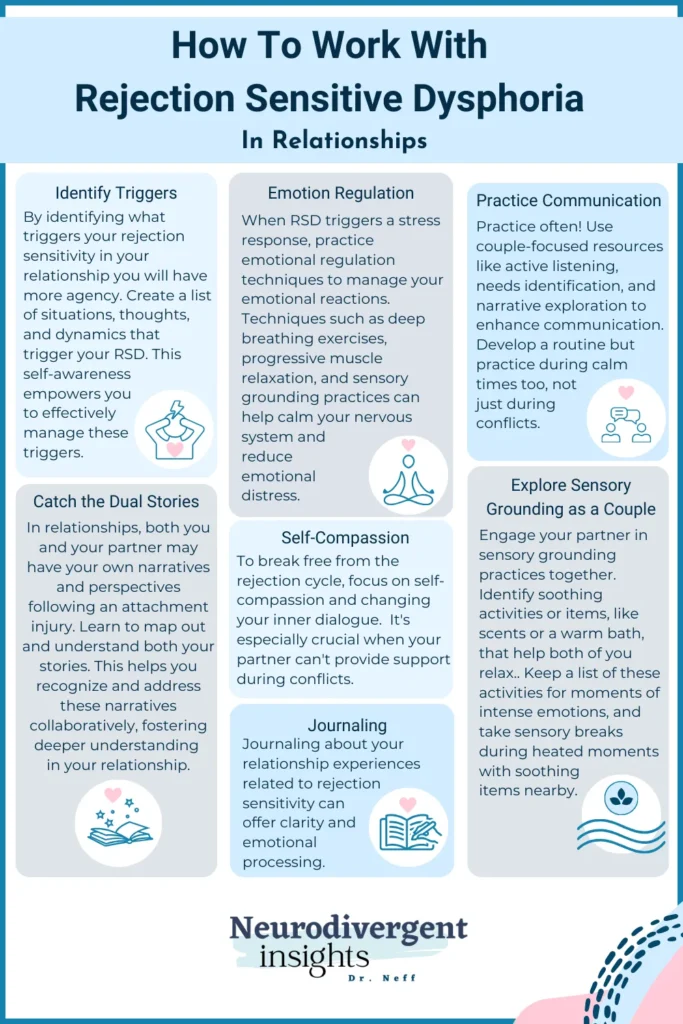
1. Recognize Your Relationship Triggers
Start by identifying what triggers your rejection sensitivity in your relationship. Create a list of situations, thoughts, and dynamics that trigger your RSD. Pay attention to your emotional responses and typical reactions, like seeking reassurance or withdrawing. This self-awareness empowers you to take control and effectively manage these triggers.
2. Catch the Dual Story with the EFT Infinity Loop
In relationships, both you and your partner may have your own narratives and perspectives following an attachment injury. Use the EFT infinity loop to map out and understand both your stories. This tool helps you recognize and address these narratives collaboratively, fostering deeper connection and understanding in your relationship.
3. Embrace Journaling for Self-Reflection
Writing down your thoughts and feelings can help you process your emotions and gain clarity. Journaling about your experiences related to rejection sensitivity in your relationship can help you gain greater insight.
4. Prioritize Emotional Regulation
When RSD triggers a stress response, practice emotional regulation techniques to manage your emotional reactions. Techniques such as deep breathing exercises, progressive muscle relaxation, and sensory grounding practices can help calm your nervous system and reduce emotional distress.
5. Share Deep Breathing with Your Partner
Deep breathing exercises can signal to your nervous system that you’re safe within your relationship. Share deep breathing exercises with your partner as a calming ritual. Inhale deeply through your nose for a count of 4, hold for 1-2 seconds, and then exhale slowly through your mouth for a count of 6. This shared practice can strengthen your emotional connection.
6. Engage in Progressive Muscle Relaxation Together
Invite your partner to join you in progressive muscle relaxation exercises. Starting with your feet and working up, tense and then relax different muscle groups together. This shared practice can promote relaxation and signal safety within your relationship. Explore visualization and tension-release techniques to enhance the experience.
7. Explore Sensory Grounding as a Couple
Engage your partner in sensory grounding practices as a couple. Identify activities or items that soothe you, such as enjoying scents or taking a warm bath. Encourage your partner to participate and concentrate on the sensations while providing support and redirection if needed. Create a list of soothing activities or items to have on hand for both of you during intense emotional moments. Know when to take a “sensory break” when things are getting heated and have sensory-soothers on hand.
8. Practice Communication
Consistent practice is key! Utilize resources designed for couples, such as exercises in active listening, needs identification, and narrative exploration, to refine your communication skills. Make it a habit to practice these techniques, but be mindful to do so in non-activated moments. Practicing only during conflicts may limit its effectiveness. For instance, engage in active listening by inquiring about each other’s days and wholeheartedly concentrating on and reflecting back what you’ve heard your partner say.
9. Self-Compassion and Acceptance
To liberate yourself from the cycle of rejection, it’s essential to cultivate self-compassion and reshape your internal narrative. Research suggests that an effective method for navigating painful emotions is to evoke a contrasting emotion, and self-compassion achieves precisely that when confronting rejection. It holds the potential to shift your emotional state, which can be especially valuable when your partner is unable to offer affirmations and compassion, such as during a conflict. In such moments, your ability to extend these affirmations to yourself becomes paramount. Here are nine relationship affirmations that you can practice on your own:
9 RSD and Relationship Affirmations:
I am in control of my emotional responses, and I choose love and understanding.
I have the capacity to attract and nurture relationships that contribute to my growth and happiness.
Like all humans, I am not defined by my challenges. My challenges have also contributed to my resilience and strength.
I trust that my vulnerability in relationships is a source of authentic connection and growth.
My worth is not determined by the actions or opinions of others.
I am worthy of love and acceptance, exactly as I am.
I acknowledge my unique qualities, and they are valued in the important relationships in my life.
I am deserving of healthy, loving, and fulfilling relationships.
I trust in my ability to create and maintain meaningful connections
Rejection Sensitive Dysphoria Relationships Resources:
Self-Compassion Resources
Dr. Kristin Neff has self-guided resources and audio recordings. You can find guided self-compassion exercises here.
Books on Communication and Relationships:
Explore books on effective communication, conflict resolution, and building healthy relationships. These can provide valuable insights for anyone navigating relationship challenges. Here are a few books that may be helpful:
The ADHD Effect on Marriage: While it may be slightly outdated, this book won several psychology awards back in 2010 when it came out and was one of the first books to open the conversation about ADHD and relationships.
Attached: While not directly related to RSD, this section delves into attachment theory within romantic partnerships. Given the significant overlap between rejection sensitivity and insecure attachment, gaining insights into attachment systems and how to navigate them can bolster the resilience of your relationship when impacted by RSD.
ADHD and Us: Written by an ADHDer, this book takes a non-pathologizing take on how to work with ADHD-related relationship difficulties.
Hold Me Tight: While not tailored specifically to RSD, this book utilizes Emotionally Focused Therapy techniques to assist couples in identifying and addressing relationship patterns and cycles. Considering that RSD frequently contributes to unhelpful patterns, this resource can be highly beneficial. Moreover, it offers practical exercises for couples to engage with at the conclusion of each chapter, combining education with hands-on application.
Mating in Captivity: Although not RSD-specific, Esther Perel’s insights on relationships offer a valuable framework for comprehending contemporary challenges in marriage and romance.
Podcasts
Esther Perel offers excellent relationship resources, including her renowned Where Shall We Begin podcast. In this podcast, she conducts live counseling sessions with couples, providing valuable insights into the dynamics at play and sharing her therapeutic thought process. Personally, my favorite relationship resource is Esther Perel. Although not directly addressing RSD, her work provides a comprehensive framework for understanding relational dynamics and communication, which can greatly assist couples in navigating the challenges of RSD.
Mental Health Apps
Explore mental health apps that focus on emotional regulation, mindfulness, and stress reduction. These can be useful for managing emotional challenges in relationships. Some apps I appreciate include Headspace, Real, and Daylio. There are certain apps like “Lasting” or “Relish” for improving communication and connection.
Psychology and Self-Help Websites
Websites like Psychology Today and Additude Magazine often have articles and resources related to relationships, emotional well-being, and self-improvement.
The Rejection Sensitive Dysphoria Bundle
For more of a deep dive into RSD and how to work with it, consider checking out our RSD bundle; this includes a 160-page workbook, Toolkit, affirmation cards, and RSD journal activities.
Summary
Navigating the landscape of relationships when Rejection Sensitive Dysphoria (RSD) is a significant factor has illuminated crucial insights. RSD, marked by heightened emotional responses to real or perceived rejection, serves as an intense emotional amplifier, often leaving individuals feeling emotionally drained. Beyond its individual impact, it casts a profound shadow over relationships, leading to misunderstandings, trust issues, communication breakdowns, and emotional turbulence.
Fortunately, there are effective strategies to surmount these challenges, including clear communication, trust-building, self-compassion, and boundary-setting. By delving into the unique dynamics of RSD within relationships and arming ourselves with practical tools, we can cultivate healthier and more resilient connections. This journey necessitates understanding, support, and ongoing self-improvement, but the rewards of nurturing meaningful relationships are undeniably worth the effort.

